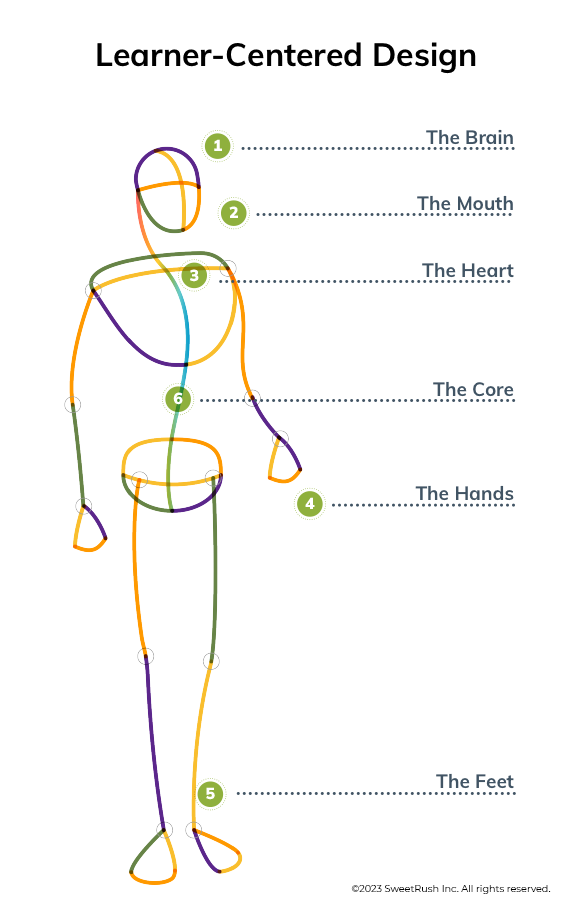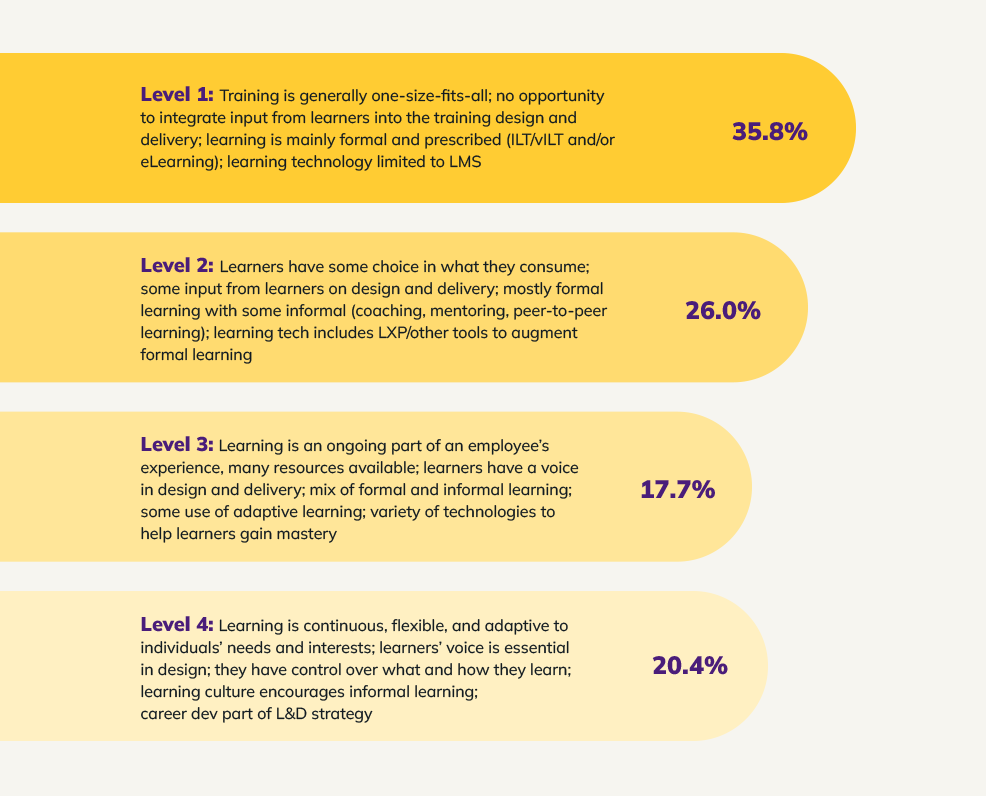Say what we will about 2024: It was the year I finally entered the Star Trek universe.
While watching the Enterprise crew deploy their technical prowess, communication skills, and bottomless wells of resilience, I couldn’t help but wonder about the Starfleet training program.
How do crew members acquire the skills to meet (literally) alien situations with aplomb? What does learning look like in the 22nd century and beyond? And who are the masterminds of the Starfleet L&D team?
Keeping the crew’s specialized skill sets so carefully honed requires an enormous amount of preparation and strategic thinking. Meanwhile, the challenges, threats, and surprises keep coming—it’s the ultimate VUCA (volatile, uncertain, complex, and ambiguous) environment.
Small wonder that the challenges faced by the Enterprise crew resonate so much with those L&D leaders are facing now, in 2025. Though most of us rarely interface with interplanetary villains, we do constantly navigate a complex landscape, adapt to new technologies, and strive to equip our people with the skills they need to meet an uncertain future with confidence.
Like the Starfleet crew, we’ve proven that we’re scrappy, agile, adaptable, and resilient enough to pivot amid global and organizational change and constantly evolving needs. Through the upheaval of the past few years, weʼve exhaustively demonstrated our ability to embrace the motto ad astra per aspera: “To the stars through hardship.”
We believe 2025 is our year to revise that motto and aim for the stars through abundance instead. To that end, we’ve assembled a collection of 10 trends to show you how transformation could look for your enterprise. (Download our guide to the 10 defining L&D and talent management trends of 2025 here.)
But before we make it so, let’s revisit how we got here and where we’ve been.
Where Weʼve Been: Lessons Learned from 2024
Unlike the Talking Heads song, our learning landscape is not the same as it ever was. In our increasingly volatile, uncertain, complex, and ambiguous (VUCA) world, some detours are inevitable. Here are four lessons learned from 2024:
1. Strategy > Shiny Objects
L&D leaders face constant pressure to innovate and adapt. Yet we risk getting mired in planning and then pivoting when our learning programs donʼt deliver immediate ROI. Though new technologies like AI are helping some teams find efficiencies, others find themselves perpetually changing tracks in favor of the next best thing. But in those constant course changes, they burn energy and resources…and can even forget where they’re going.
L&D teams stuck in the leap-look-repeat cycle now face the need to zoom out and map a more systematic route toward their goals. In a world where reactivity has become the norm, our ability to create a targeted strategic plan focused on essential skills will be incredibly valuable to our organizations.
Ready to let your strategy shine? Check out Trends 1, 2, 4, and 7 for the latest developments in digital transformation, talent management, innovative learning technologies, and workforce planning.
2. Economic Uncertainty Breeds Inconsistency
As a volatile global economy forces our organizations to freeze budgets, downsizing and voluntary attrition create pain closer to home. Those who remain face staffing shortages, inconsistent leadership, lack of clear direction, and often, shifting priorities. Because L&D leaders are so closely aligned with the business, we’re along for this bumpy ride.
The silver lining? The economy is rallying, offering us a chance to return to the basics and build a solid foundation for more complex features like adaptability and self-directed learning paths.
A return to the fundamentals is also the best investment for our finite budgets. A sound strategy ensures sound investments (see No. 1)—and we can help with that.
3. AI Apprehension Is Real
Though this truth contains elements of both Nos. 1 and 2, it’s got a character all its own.
When generative AI rose to stratospheric popularity in 2022, it didnʼt take long for professionals in every industry to put it to work creating outlines and first drafts, identifying data patterns, and summarizing lengthy texts.
Delegating these rote tasks to AI has helped knowledge workers save time and focus on their most important work. The resulting savings in time and bandwidth help these professionals enjoy their work more fully and apply their creativity more frequently.
Yet as AI tools continue to evolve in accuracy, creativity, and complexity, humans are increasingly concerned about its ability to replace them…if not now, then soon. In fact, some professionals even conceal their use of AI for fear of appearing replaceable to their supervisors and teams.
L&D leaders and professionals arenʼt immune to these fears, which can make it challenging for us to approach AI learning strategy and enterprise AI training in a way that supports—rather than threatens—the humans who use it.
See Trend 1 for more on how we can pair AI with the rich—and, yes, irreplaceable—human intelligence already in our organizations for meaningful digital transformation, impactful immersive learning experiences, and measuring the ROI of our learning programs.
4. Simplicity Is the New Innovation in L&D Strategy
Though adaptability and agility are crucial in a VUCA world, keeping up with constant change can be exhausting. L&D folks tend to be lifelong learners, so itʼs understandable that we feel pressure to keep current with the many innovations in our industry. And because we also tend to be doers, we want to apply what we learn.
Add to that the pressure to adopt new technologies and get more done with less, and it’s no wonder that we’re feeling overwhelmed.
Here’s a position that might sound contrarian: We donʼt always have to be innovating.
In fact, in the face of perpetual change and uncertainty, simplicity is the new innovation.
Here’s what we’re advocating this year: Let’s take the energy and bandwidth we’ve been putting toward the churn and reinvest it in:
- Setting a course and seeing it through.
- Targeted use of technology and resources.
- Learning strategy focused on core skills, done right.
Not sure what to prioritize or where to start laying out a strategy that speaks to your organizationʼs needs? Inviting a partner into the conversation is always an option. Think of it as bringing in a contractor and crew who can help you survey your organizational landscape and create a learning and business blueprint that works in that unique space.
Download Unlocking the Future of Learning: SweetRush 2025 Trends Report for more on the 10 strategies L&D leaders are using to chart their course in 2025.











